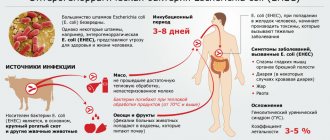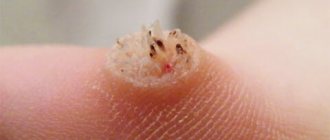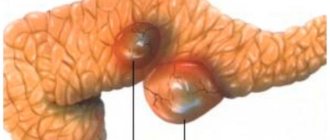Tourette's syndrome
According to statistics, up to 10 children out of 1000 suffer from involuntary movements or sounds, up to 5 adults out of 10,000 try to hide tics from other people, are afraid to go out in public or communicate with new people. Uncontrolled movements, shouting of incomprehensible words, swearing, and various sounds were combined as signs of Tourette's syndrome in the 19th century.
In 1885, French neurologist Gilles de la Tourette published a report of 9 patients with the same symptoms. They had been described previously, including in fiction, but it was he who carried out the classification and analysis.
The first signs of Tourette's syndrome appear most often in children aged two to five years, later their intensity decreases somewhat. In adolescence, however, they can appear with renewed vigor. After 20 years of age, tics remain in a small number of people. Their intensity and frequency are noticeably reduced.
The disorder most often affects boys - it occurs approximately 3 times more often in them than in girls.
Tics can occur in a variety of diseases. They can be transient, which are characterized by changes in location and intensity, only chronic vocal or only motor. However, Tourette syndrome is said to exist if the tics:
- appear before the age of 18;
- occur as a primary phenomenon and are not directly associated with any disease;
- persist without remission for more than a year;
- manifest themselves as vocal and motor, and one may appear first, and after some time the other.
However, sometimes tics that arise as a consequence of certain pathologies are also attributed to Tourette’s syndrome and are called tourettisms. Such involuntary movements occur against the background of encephalopathy , idiopathic dystonia, schizophrenia, and psychogenic pathologies.
For reference. Tourette syndrome is treatable through child psychotherapy . We recommend contacting a specialized one, where experienced specialists work.
Classification
Modern classifications of the syndrome are based on the severity of the lesion and the main manifestations of the disease. Pathology is divided into several degrees, among which are:
- Mild degree. The patient is no different in appearance from healthy people. Attacks of tics occur quite rarely. During the course of the disease there are asymptomatic periods.
- Moderate degree. Vocal and motor disturbances become noticeable to strangers and become more and more alarming. Self-control of actions is still possible, but to a lesser extent.
- Pronounced degree. At this stage, the symptoms of the syndrome are practically uncontrollable.
- Severe degree. Patients can no longer regulate their behavior and lose their sense of morality and compassion. They are rude to others, show obscene gestures, and commit rash acts. At the same time, their instinct of self-preservation “turns off.”
Over the years, the signs of the syndrome dull and become less noticeable, or stop bothering them altogether. In rare cases, the disease is chronic and persists throughout life.
Symptoms
The main symptoms of Tourette's syndrome are involuntary motor and vocal disturbances. They vary in duration, arise and intensify under the influence of stressful situations, and do not have rhythm.
Researchers note that before the onset of a tic, the child experiences strong excitement and tension. There is a desire to scratch the skin, sneeze, remove specks from the eye, and cough. This way he senses a tick coming. The involuntary movement itself is perceived as helping to eliminate the unpleasant sensation.
Voice disorders
Tourette's syndrome is often manifested by involuntary sounds and screams that appear either on their own or together with uncontrolled movements. Small children suddenly scream, howl, hiss, moo, purr, cough. Sometimes they shout out incomprehensible, non-existent words and syllables.
Folk remedies
Photo: ewalls.ru
There are no traditional medicines that can relieve a person from the symptoms of Tourette's syndrome. However, you can use products based on medicinal herbs that have a sedative effect. This kind of traditional medicine will not eliminate the existing symptoms of the disease, but to some extent reduce their severity. Before using them, you should, of course, consult your doctor.
At home, you can brew tea based on medicinal herbs that have a sedative effect. These herbs include:
- peppermint. It has a sedative effect, helps normalize sleep, and gives a feeling of vigor. In addition, peppermint-based products regulate arterial and venous circulation, stimulate the gastrointestinal tract, and have antiseptic, diuretic and laxative effects. It is recommended to brew peppermint tea in the evening. The duration of drinking this tea is 1 – 2 months;
- pharmaceutical camomile. The main medicinal effects of chamomile have been known since ancient times: sedative and antidepressant. In addition, products based on this plant have an antispasmodic effect, reduce the tone of blood vessels, and have an antiseptic effect. The duration of taking chamomile tea or any other folk remedy with the addition of chamomile flowers (decoction, infusion) is on average 3 months. The course of administration may vary depending on the severity of symptoms;
- lemon balm. The plant has the following main effects: sedative, antidepressant and anti-inflammatory. In addition, products prepared from lemon balm have antispasmodic, immunomodulatory, anti-inflammatory, antiviral and antibacterial effects. To achieve the necessary sedative effect, you should drink lemon balm tea daily for 1 month. It is also important to understand that the expected effect will become noticeable only with systematic use; otherwise, the clinical effect will not occur.
There are also recipes for decoctions and infusions containing a combination of medicinal herbs. We offer you the following recipes:
- mix the following ingredients thoroughly: 1 tablespoon tansy, 1 tablespoon calendula and 1 tablespoon oregano. Pour 0.5 liters of boiling water over the resulting herbal collection and let it brew for 15 minutes. After which the infusion is filtered through a strainer. The resulting volume of infusion is drunk during the day, divided into three doses;
- take equal parts of chamomile, linden and St. John's wort. Take 2 tablespoons of the resulting mixture, pour two glasses of boiling water. Place on low heat for 3-5 minutes, then let sit for 1 hour. It is recommended to consume 1/3 cup 3 times a day.
The information is for reference only and is not a guide to action. Do not self-medicate. At the first symptoms of the disease, consult a doctor.
Causes
The disorder is associated with disturbances in the central nervous system. The exact causes of Tourette's syndrome are still unclear. There are several hypotheses:
- Genetic. According to scientists, the disorder occurs more often in children of parents who themselves suffered from involuntary tics in childhood. This happens in approximately 50% of cases. Uncontrolled movements often manifest themselves differently than in parents or close relatives. Sometimes obsessive states occur instead of tics. The severity of symptoms of the disorder also varies between children and parents.
- Autoimmune. Pathology occurs as a result of a previous disease caused by streptococci.
- Neuroanatomical. Associated with disruption of the brain, in particular, pathology of the frontal lobes, thalamus, and basal ganglia.
- Dopamine. According to one theory, the occurrence of involuntary disorders is associated with high levels of dopamine.
- Metabolic disease. According to this hypothesis, Tourette's syndrome occurs due to magnesium deficiency. Completing the deficiency and simultaneously taking vitamin B6 can help get rid of tics.
- Unfavorable pregnancy. During intrauterine development, the fetus experiences hypoxia, the influence of toxicosis, alcohol or nicotine. Under the influence of these factors, neurotic disorders arise.
- Impact of neuroleptics. The side effect of psychotropic substances is that they cause involuntary movements.
Drugs
To correct the mental state of patients, several groups of medications are used. The basis of such treatment is antipsychotics, which include Haloperidol and Risperidone. Benzodiazepines, such as Diazepam, also inhibit pathological brain activity. However, the regular use of such drugs imposes restrictions. Substance use is associated with a decrease in the quality of life of patients. This is due to the fact that such drugs have significant side effects and often provoke the development of withdrawal symptoms when they are discontinued. In some cases, the prescription of tricyclic antidepressants is justified, especially against the background of patient depression and sleep disturbances.
Diagnostics
If a child experiences involuntary movements, a consultation with a neurologist is indicated. The doctor will collect anamnesis, find out all the details regarding the appearance of tics, check whether relatives have them, and prescribe tests. Their main goal is the differential diagnosis of the syndrome from other pathologies: rheumatic chorea, the occurrence of neoplasms, the juvenile form of Parkinson's disease.
The child is prescribed electroencephalography, MRI, biochemical and general blood tests.
Lifestyle
Practical recommendations for parents with children with Tourette syndrome
- Rebuilding an existing skill. You should try to teach your child to control his tics. This should be done by a qualified specialist. To rebuild the skill, the child will need to have a clear understanding of tic behavior in order to subsequently learn how to correct it.
- Regular meetings with your treating doctor. A qualified psychiatrist is obliged to conduct conversations and sessions with the child, which are aimed not only at psychological support, but also at helping him cope with his thoughts, behavior, and feelings. Members of the family where the child with this problem is growing up can also take part in the consultations.
- Own education and education of the environment. Understanding what Tourette's syndrome is allows us to delve deeper into the child's problems. The source of knowledge should be the attending physician, as well as information resources such as medical textbooks, magazines and articles on this topic.
- It is important to understand the mechanism that causes the next tick to be triggered. Recording what preceded the next vocal and behavioral disorder will help you build a logical chain and establish the trigger factor.
- Making adjustments. If you make appropriate changes in the environment of a sick child, in his life routine, you can reduce the number of tics. Often, breaks from doing homework, the possibility of additional rest at school, etc. help.
- Sometimes it is worth allowing a child with motor tics to spend more time typing on a keyboard rather than writing by hand. School teachers must be informed about this. Also, do not prohibit your child from moving around or leaving the classroom if he needs it. Sometimes these children should be given privacy.
If necessary, you can practice classes with a tutor or switch to home schooling.
Treatment
Tourette syndrome cannot be completely cured. There is currently no complex therapy that would cure tics. Psychotherapy plays a major role in treatment. Classes are held regularly and over a long period of time. Their goal is to find out what causes the attacks and how the child feels during them. The psychiatrist teaches him to recognize the approach of a tic and switch to other actions in order to avoid its occurrence.
Classes are also aimed at reducing mental stress and developing the ability to cope with anxiety, tension and excitement. An important part is providing assistance in adaptation to school and society. Not only children, but also their parents can participate in the classes.
The main methods used to correct disorders or prevent them are fairy tale therapy and art therapy.
The use of medications is justified only in severe cases of the disease, when tics become an obstacle to the child’s social adaptation, academic performance or self-realization. The prescription of drugs is made by a doctor and depends on the individual characteristics of the patient.
At the same time, to relieve symptoms, it is possible to take dietary supplements whose principle of action is similar to antipsychotics. The effectiveness of dietary supplements may be lower than that of medications, but at the same time they have virtually no contraindications and can be prescribed without a prescription.
Gamma-aminobutyric acid (GABA)
An essential amino acid and one of the main neurotransmitters influencing inhibition processes in the central nervous system. Like antipsychotics, GABA reduces the transmission of nerve impulses, which helps reduce general excitability.
Glycine
Glycine is also both a neurotransmitter and an amino acid. Increases the level of GABA and at the same time produces an inhibitory effect on neurons. According to research, glycine reduces the side effects of taking antipsychotics. It has nootropic properties and improves memory.
L-Theanine
Another amino acid that is obtained from green tea leaves. Helps reduce anxiety without affecting cognitive function.
What kind of disease is this?
Tourette's syndrome is a neuropsychiatric disorder that is accompanied by involuntary vocal and motor tics, as well as deviations in human behavior.
Moreover, the most important sign of the disease, especially in older age, is obscene language, which a person can shout at any time without any reason. Unexpected laughter, sharp scratching, unnatural twitching of facial muscles, spontaneous movements of arms and legs - these are the main symptoms of the disease that are beyond the control of the patient.
Typically, the first signs of the disease become noticeable at a young age, around 3-5 years. In most cases, the pathology affects boys. The disease can be inherited and passed from generation to generation.
Complications
The consequences of Tourette's syndrome concern mainly the psycho-emotional sphere. Due to constant ridicule at school, the child becomes anxious, nervous, withdraws into himself, and often experiences depression and stress. Sometimes such a child becomes prone to aggression. Emotional distress leads to sleep disturbances and interferes with adapting to society, meeting new people, and making friends.
Over time, the constant repetition of unfavorable and difficult situations leads to the formation of personality traits that further interfere with adaptation. They remain with a person even after the tics have disappeared, become rare and insignificant.
In general, the disorder does not affect life expectancy or mental or physical development.
Stages
According to the tic severity scale, there are 4 stages of the disease:
- A mild degree is sometimes invisible to those close to you. The patient copes well with emotional stress, controls his behavior and can live a full life. Sometimes there are long periods without tics.
- Moderate is more noticeable, the patient cannot completely restrain himself.
- A severe degree practically deprives a person of the ability to control his behavior; he has difficulty existing in society, work and everyday activities are difficult.
- The severe degree is completely uncontrollable, motor and vocal tics are very pronounced, the patient is incapacitated.
Types of speech disorders in Tourette syndrome
Tourette syndrome is characterized by the following speech disorders:
- palilalia - repeated repetition of the same word;
- echolalia - repetition of words and phrases spoken by the interlocutor;
- coprolalia – uttering obscene words (observed only in 10% of cases, and therefore is not a characteristic symptom);
- The volume of speech, its speed, timbre, accents, tone, etc. may change.
Other symptoms of this disease are behavioral reactions, which are expressed in excessive impulsiveness, emotional instability and aggression.
Prevention
The influence of genetic predisposition cannot be excluded in any way. To reduce the risk of neurological disorders in a child during pregnancy, it is important for the expectant mother to be observed by a doctor. You need to eat right, take medications only as prescribed by your doctor, do not smoke or drink alcohol.
You can reduce the frequency and intensity of attacks if:
- avoid stressful situations;
- love the child and let him know his feelings;
- avoid conflict situations, including those in which the child is not involved;
- work with a psychologist or psychotherapist;
- help him adapt to children's groups;
- develop artistic or musical abilities.
Tourette's syndrome is not a death sentence; it does not affect mental and physical development. The impact on the emotional sphere can be avoided if you create favorable conditions in the family, visit a psychologist, and help the child in everything. Most often, symptoms disappear after 18-20 years.
Historical information
This syndrome was first described by Gilles de la Tourette in 1884, who at that time was a student of a French psychiatrist. He based his conclusions on observations of a group of nine patients. But back in 1825, the French doctor Jean Itard published an article describing symptoms in three women and seven men, similar to those described further by Tourette. However, the very first mention of such a disease is found in the book "The Witches' Hammer" in 1486, which talks about a priest with motor and vocal tics.
Forecast
Treatment of the syndrome usually brings positive results. After just a few months, patients’ condition stabilizes and the first improvements become noticeable. To do this, the patient only needs to visit a neurologist and psychologist, as well as special classes that are aimed at relaxing the nervous system.
Only in severe cases, when therapy was carried out poorly or untimely, tics can become lifelong. At the same time, patients become prone to depression and antisocial behavior. Quite often they experience panic attacks and inadequate reactions to surrounding events. But, despite the severe symptoms, Tourette's syndrome does not affect a person's life expectancy and intellectual development.
Therefore, in most cases, people with this disorder live long and happy lives.
Nervous tics and tremors in a child: causes and treatment Raynaud's syndrome Irritable bowel syndrome Raynaud's disease (syndrome): symptoms and treatment Parkinson's disease Patau's syndrome











